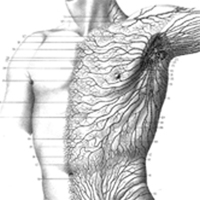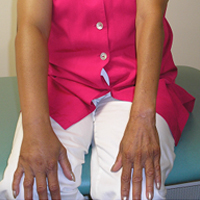As I live with Lymphoedema, I understand the disease from the inside out.
This enables me to share important information on the practicalities of living with lymphoedema. I like to work holistically and practically with patients in a caring environment. Communication and an understanding of what is going on in the body is key.
I welcome inquiries and I am delighted to chat with anybody who has concerns or questions.
I offer house calls where viable as transport can be difficult during illness. I also offer a free assessment in The Rathmichael Clinic.
Lymphoedema is the swelling of the limbs and body due to the accumulation of lymph. Lymphoedema is not well documented and is more common than the medical profession generally relises. It affects an estimated 500 million people worldwide.
Manual Lymph Drainage Ireland

Lymph is a colourless fliud that forms in the body. It normally drains back into the circulation through a network of vessels and nodes. Lymph nodes act as filter stations. The lymph system removes excess fluids, protein and fats from the body's tissues. It plays an important part in the body's defence against infection.
If the drainage routes through the lymphatic system become blocked or damaged, lymph accumulates in the tissues and swelling (odema) occurs. Unlike other odemas, lymphoedema can lead to changes in the tissue such as fibrosis (hardness) and an increased risk of infection. The swelling becomes even more difficult to control.

Primary Lymphoedema is usually determined from birth and may be due to under development of the lymphatic system. It can affect infants or children and men or women of any age.
Secondary Lymphoedema can occur in the treatment of cancer following surgery or radiotherapy. It can also occur as a result of infection, severe injury or any other trauma.